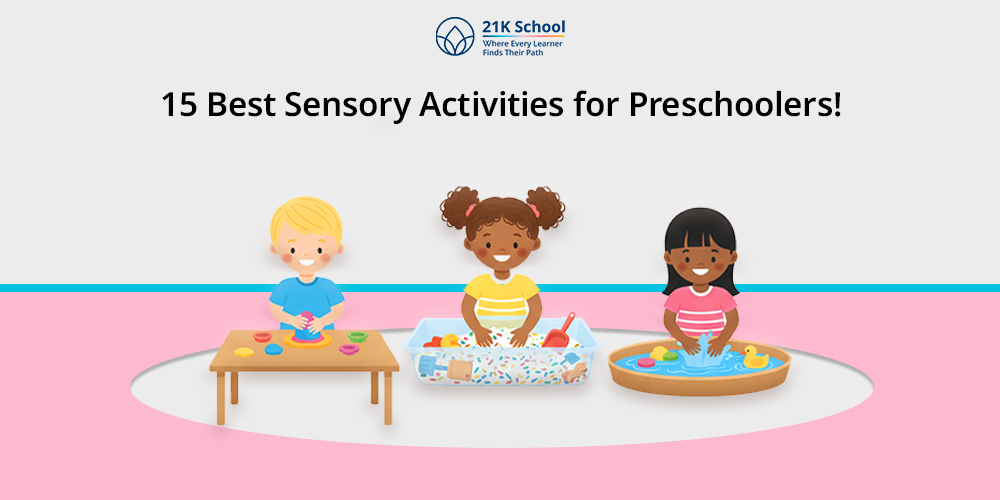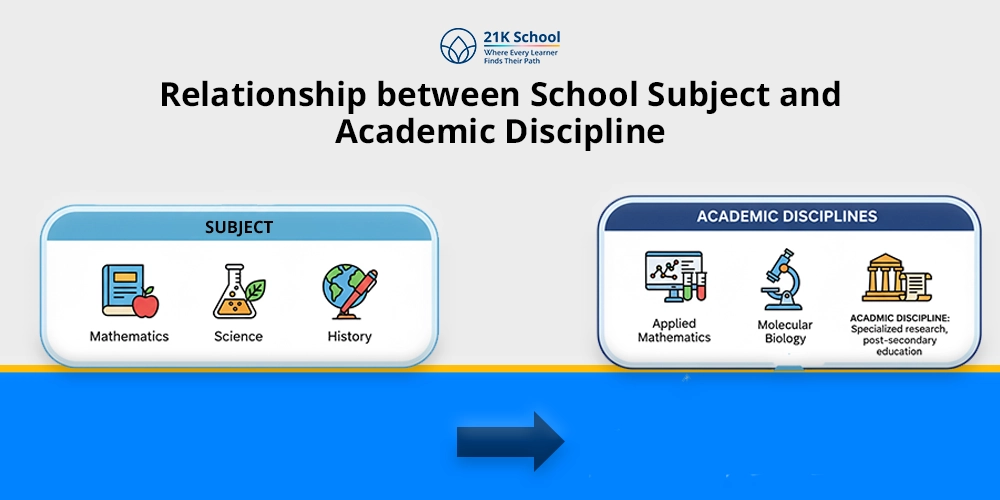
Preschoolers are hyperactive and totally involved in exploring the world around them.
Every sense organ that they have is in play when they touch, see, smell, and hear different things from different means.
We might see them as they are just playing, but in reality they are building something really important for their cognitive development .
Their all kinds of motor skills are also refined and train them into making healthy learners in schools and in general life.
And if you are wondering, this article is all about the simple and executable sensory activities for preschoolers that you as a parent or educator can bring into practice and have fun in learning .
Contents
- What are Sensory Activities for Preschoolers?
- 15 Sensory Activities for Preschoolers
- 1. Sensory Bin
- 2. Playdough & Slime
- 3. Finger Painting
- 4. Sound Matching Games
- 5. Musical Instruments
- 6. Storytime with Sound Effects
- 7. Color Sorting Games
- 8. Mirror Play
- 9. Make-Your-Own Snacks
- 10. Jumping and Bouncing Games
- 11. Animal Walks
- 12. Balance Beams
- 13. Frozen Treasure Hunt
- 14. Bubble Wrap Stomp
- 15. Mud kitchen
- Conclusion
What are Sensory Activities for Preschoolers?
Any form of physical play that involves kids interacting with the world using their senses counts as sensory activities for preschoolers.
All they learn from is playing freely in mud, making musical gadgets with rice or beans, and so many more mentioned in this article.
We usually believe, there are five senses including touch, sight, hearing, taste, and smell. Two more of them are proprioception (being aware of where your body is), and vestibular (balance and movement) senses.
Sensorial play is free, sensual and can be messy. And it’s full of benefits.
It helps kids improve fine and gross motor skills , build focus and memory, practice problem-solving , become emotionally sensitive, and learn new words and concepts.
The best part? You don’t need fancy tools. Water, flour or dirt or even bubbles do.
Sensory play is simple, cheap and much more educational than it appears.
15 Sensory Activities for Preschoolers
We will see some of the best sensory activities for preschoolers such as sensory bin, animal walk, finger painting, and storytelling.
1. Sensory Bin
A box filled with junk to scoop, pour and dig what they want. Kids adore it.
- Materials: Plastic tub, bone dry rice, beans, sands, toys and scoops.
- How To Do It: Add toys or scoops to the bowl you have selected. Demonstrate to your child how to dig, scoop, and locate the hidden or mixed objects and allow the child a free exploration.
- Tips: Turn themes about to make it interesting. Younger children love fillers (such as cereal) that are edible.
2. Playdough & Slime
Elastic with oil, squeezy, squishy, and relaxing sounds are all found when you play with playdough and slime.
- Materials: Purchased or homemade playdough/slime, cookie cutters, small objects to be pressed in.
- How To Do It: Prepare your child with some playdough or slime and invite him to squish, roll and shape it. Add texture and variety with such tools as cutters or stamps.
- Tips: Include scents so as to add additional sensory output. Slime is messier, so do it in a tray or outdoors. Keep playdough in an airtight container in order to reuse.
3. Finger Painting
Painting that involves touch and organic finger printing sounds engaging for kids.
- Materials: Wash paint, giant paper, worn out rags or smocks.
- How To Do It: Take paint on paper and ask the kids to use their fingers, hands or even feet to spread the paint. Include them in combining colours and feelings.
- Tips: Cleaning should be your priority, so your kids can either go for washable paints, or wear rugs when painting carefree.
4. Sound Matching Games
Sound Matching games are one such example of play to improve the child’s listening skills, and relating different sounds to memories they hold of different cereals in the kitchen.
- Materials: Small enclosed containers (varyingly plastic eggs, jars), filler (rice, coins, beads).
- How To Do It: Add two like pairs of containers. Shake (then) the other and ask your child to have a find by sound.
- Tips: Use very different sounds so that they are easier to match. Have closed containers or else the grains would spill.
5. Musical Instruments
Musical Instruments offer formidable rhythm and movement and expression.
- Materials: Drums, shakers, xylophones–or domestic objects, such as reeds and spoons.
- How To Do It: Allow children to experiment with using instruments. You may play along, promote copying the rhythm or mini dance party.
- Tips: Prepare a music basket so that you can get hold of it easily. Observe the volume in case your child is a sensitive one.
6. Storytime with Sound Effects
You will see how storytelling for learning with personalized effects develops narratives and also improves listening.
- Materials: Longtime books and ordinary sound toys (bells, shakers, claps).
- How To Do It: To follow actions or feelings, read out a story, with sound effects. Ask your kid to play along to sounds or music.
- Tips: Use exaggerated sounds and allow children to make their own effects. Make it interactive to keep the attention.
7. Color Sorting Games
Imagery and fine motor assistance are all in activities like color sorting games.
- Materials: Color items (Buttons, pom-poms, blocks), boxes or trays.
- How To Do It: Play the mixing and the sorting game and ask your child to sort the objects by color into different bowls or sections.
- Tips: Use bright, distinct colors. Make sorting a contest or a competition and talk about colors as you go into the playing job with your kids.
8. Mirror Play
Without you even noticing it properly, your kids will promote self reflection and exploration of facial expressions through mirror play.
- Materials: Placed on child level is a safe mirror.
- How To Do It: Order your child to look at the mirror, make faces, imitate emotions or move various parts of the body.
- Tips: Dress up by adding scarfs or hats, depending on activity may either be soothing or stimulating.
9. Make-Your-Own Snacks
The children are able to incorporate taste, touch and fine motor skills when they learn how to make their own snacks.
- Materials: Fruits, crackers, cream cheese, spreads are some of the simplest ingredients.
- How To Do It: Get your child to test their snacks with ingredients by placing them down or stacking or organizing.
- Tips: Allow children to make their own blends. Discuss feelings and taste also while taking advantage of this as an opportunity to become patient and step by step.
10. Jumping and Bouncing Games
Jumping and bouncing in preschoolers increases gross motor abilities and balance that help them in becoming strong with skeletons.
- Materials: Cushions, pillows or a trampoline should they have one.
- How To Do It: Get children to jump, bounce or jump between spaces or see which child can jump highest in a game like jump like a frog.
- Tips: Ensure there is the presence of a safe and cushioned space. Keep rhythm by means of music or rhymes.
11. Animal Walks
If you want your preschooler kid to be good with the play and perception, you should introduce them to animal walks.
- Materials: Open space, and imagination skills
- How To Do It: Ask children to pretend to act like various creatures – waddling, as a penguin, or slithering, as a snake – hopping, as a bunny.
- Tips: These sound making would be more fun with relatable yet simple stories depicting observing skills of your wards.
12. Balance Beams
Kids like such plays where they have to challenge themselves in simple activities of balancing and walking.
Balance beams are thin pathways made to let your children walk and face their fears to learn coordination.
- Materials: A beam, line of tape on the floor, or a board, not very thick.
- How To Do It: Make children walk with in-between steps on the beam. You can cheer them up by being beside them and giving small gifts or points on every challenge completed.
- Tips: Encourage them and experiment with speeds by taking turns or delivering things. Placing pillows in the surrounding area could ensure safety by your kids’ side.
13. Frozen Treasure Hunt
Frozen treasure hunt invites the integration of play with stimulating STEM techniques.
- Materials: Toys, water and ice cube trays or cube containers.
- How To Do It: The first step would be to ask your preschoolers to freeze toys in ice blocks. Provide children with such resources as warm water or spoons to save the treasures.
- Tips: Do not rub the ice under their knees on body parts too harshly and let them enjoy summers with such wonderful games of sensory stimulations.
14. Bubble Wrap Stomp
Bubble wrap stomp can be a fun learning activity that grows into sensory play of feet through painting the bubble wraps..
- Materials: Bubble wrap sheets, and paint colours along with large white sheets..
- How To Do It: Cover the feet of learners with bubble wraps around them and dip them in large buckets of paint colours. Now it’s time to grow in enjoyment and feel sensations when the paints stick to sheets and bubble pricks.
- Tips: Use outside or in an area that does not have noise issues. Make it a game (who is going to pop the most?).
15. Mud kitchen
Playing and making a creative, chaotic and sensuous mud kitchen will always open newer ways of student engagement and upskilling of your kids.
- Materials: Out-of-doors space, mud, stale pots, pans, spoons.
- How To Do It: Prepare a “kitchen” in which children are able to combine mud, water, leaves, and other materials of nature to cook and create.
- Tips: Wear out-of-door clothes and promote story telling during play.
Conclusion
Sensory play entertain preschoolers keeping them busy, by the way they make sense of the world.
They are learning through their bodies whether they are squishing playdough, dancing around or digging in the dirt.
These basic actions aid in all sorts of motor control to emotional regulation, and without their contribution, they are not even aware of it.
And honestly? You don’t need much. A little space and a few basic materials and willingness to allow things to get somewhat messy can do a lot.
Sensory play is effective in how it is a lot more than playing sophisticated games.


